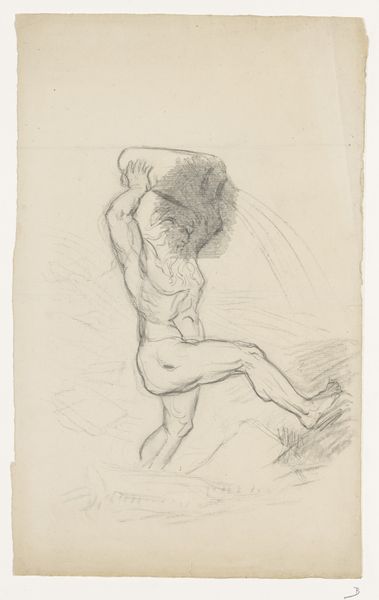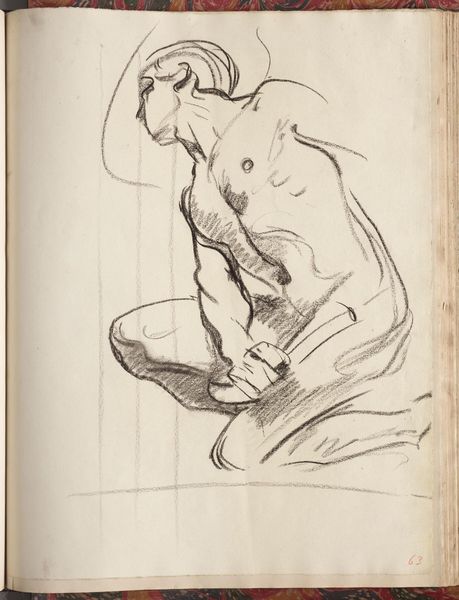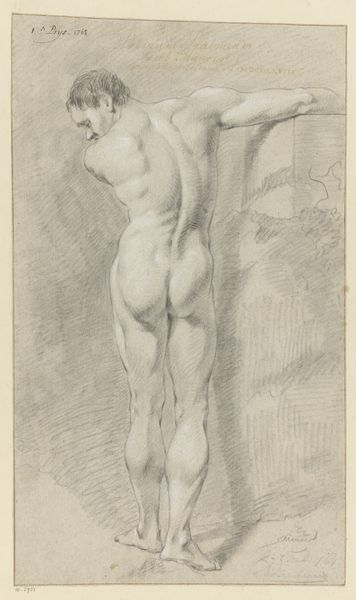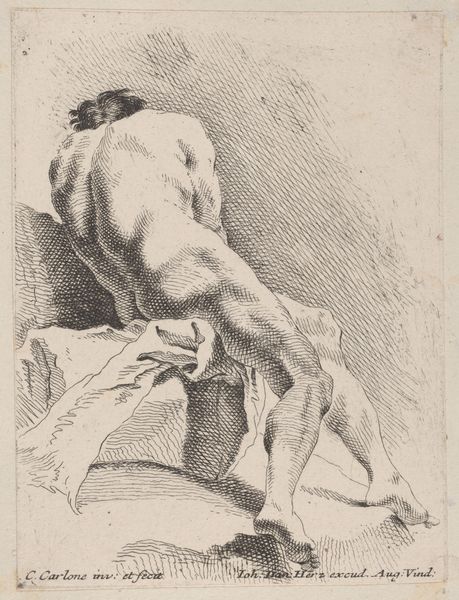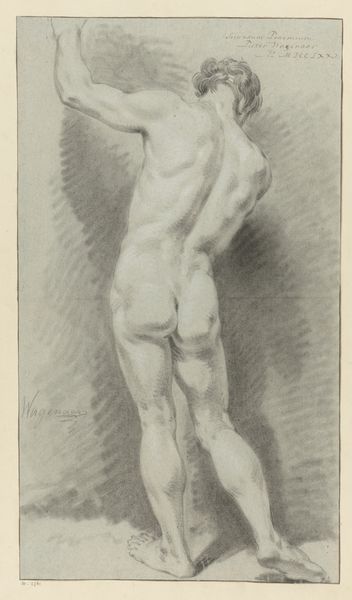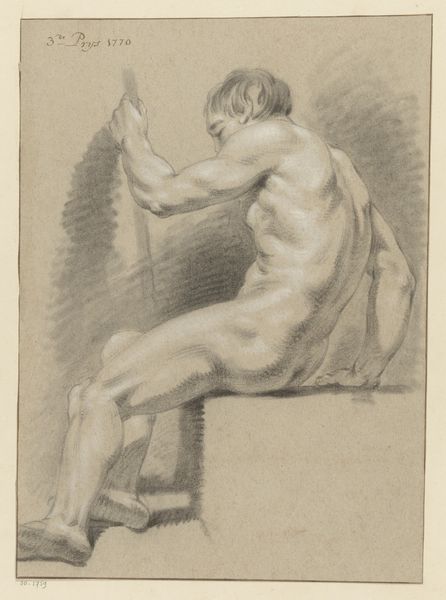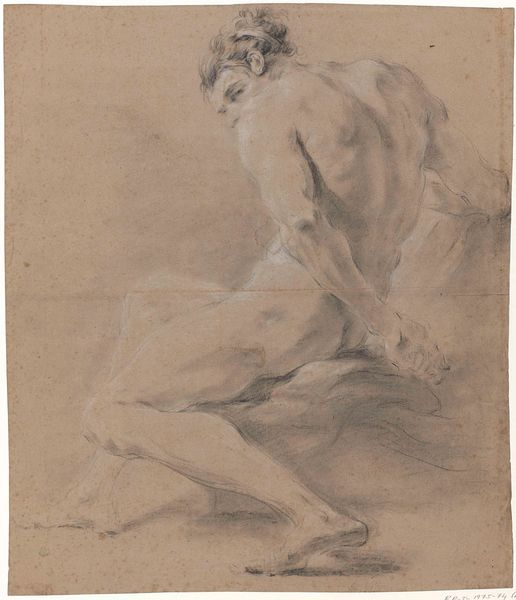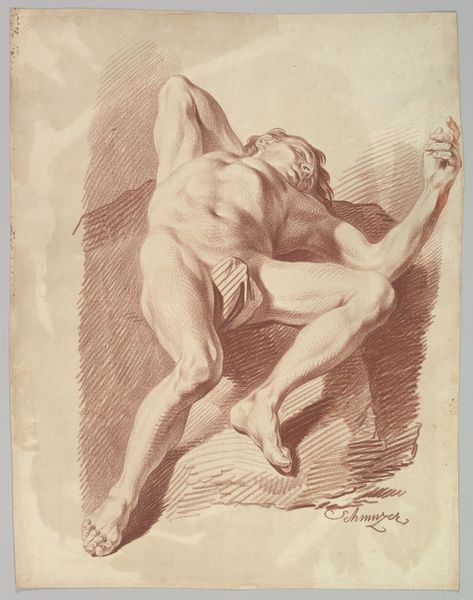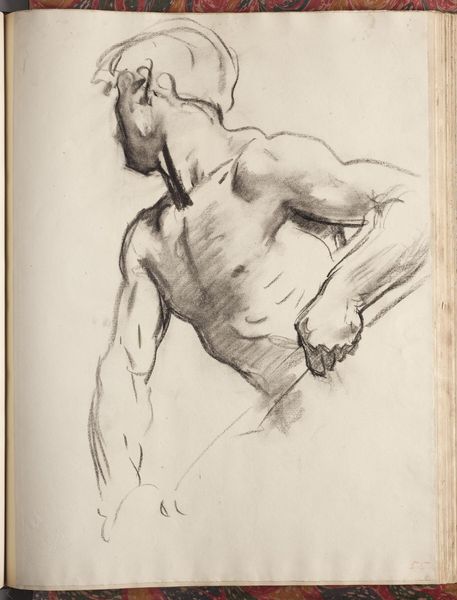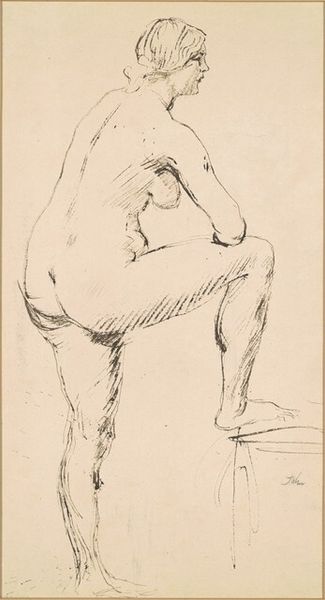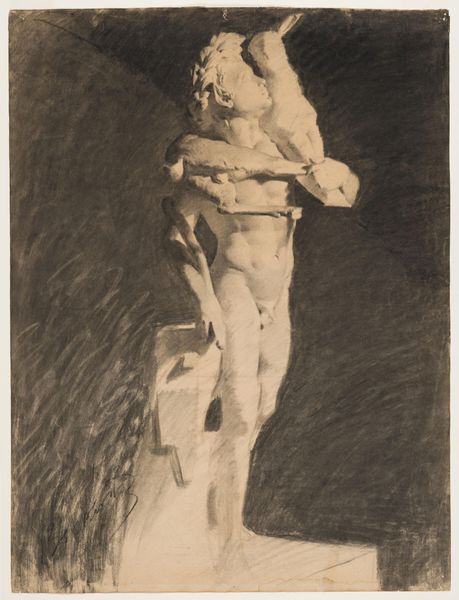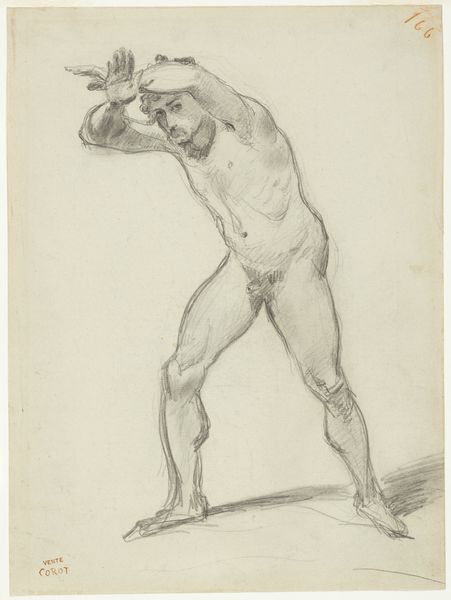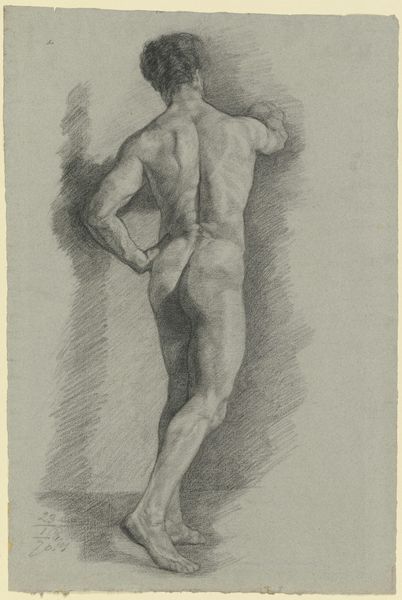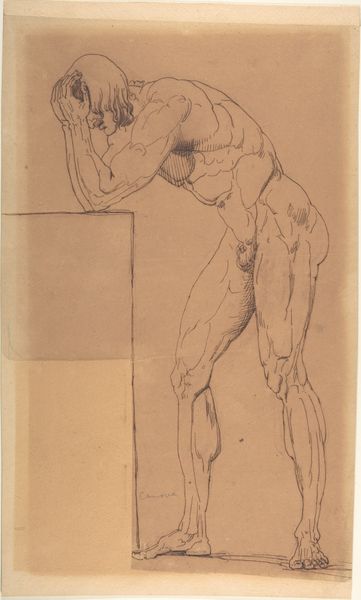
Knielend mannelijk naakt op de rug gezien (1e prijs 1766) Possibly 1766
0:00
0:00
drawing, pencil, charcoal
#
pencil drawn
#
drawing
#
neoclassicism
#
pencil sketch
#
charcoal drawing
#
figuration
#
form
#
pencil drawing
#
underpainting
#
pencil
#
line
#
charcoal
#
history-painting
#
academic-art
#
nude
Dimensions: height 532 mm, width 441 mm
Copyright: Rijks Museum: Open Domain
Curator: Here we have Jurriaan Andriessen’s “Kneeling Male Nude Seen From the Back (1st prize 1766)," a drawing that might date back to 1766. It's currently housed right here at the Rijksmuseum. What’s your first impression? Editor: Vulnerable. Immediately, I feel the tension in the figure, the bound hands suggesting captivity or maybe internal conflict made visible through form. The charcoal and pencil strokes emphasize the straining muscles, like a dam holding back a torrent. Curator: Indeed. This work exemplifies Neoclassical ideals in art academies of the 18th century, really. The "academic" style emphasized precision and understanding of human anatomy as a foundation for history painting. Think of it as athletic, and rooted in Enlightenment values. Editor: Athletic yes, but even tormented, no? Knowing its function does something, but those graphite shadings aren’t clinically precise; rather, they add drama. The figure isn't just posed, he’s acting out some internalized tension or preparing for action, and as such he makes for the best historical and narrative characters Curator: And don't forget this wasn’t some simple sketch. Its full title is "First Prize, 1766," so this was an award-winning display of skill, proof of Andriessen's mastery in depicting the ideal human form. The competition aspect is fascinating. Art as athleticism! Editor: That adds a competitive edge to how we see this, doesn't it? Almost like a bodybuilder flaunting sculpted talent, now held by unseen rope. Maybe it critiques the rigidity of the art world, bound to form? Or maybe he did time, haha? Curator: Could be, I suppose. It reflects a period where artists were literally schooled in depicting the human body according to strict aesthetic conventions set forth by academies across Europe. What do you take away from this work? Editor: Well, despite the imposed restrictions and that contest that might be behind the artwork, I see something innately human about strain to reach an impossible beauty in this raw but formal depiction that resonates across centuries of viewers now in the Rijksmuseum. It makes art seem approachable. Curator: Exactly. Despite its formal qualities, it's approachable for us too. The raw emotion gives an artwork of high ambition a level of immediacy we still experience.
Comments
No comments
Be the first to comment and join the conversation on the ultimate creative platform.
